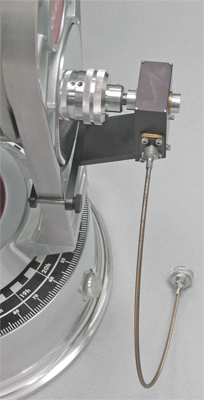Questar Distribution
![]() News
News ![]() Notes & Interesting Articles
Notes & Interesting Articles ![]() Overview
Overview ![]() Pricing
Pricing ![]() Products
Products ![]() Service or Repair
Service or Repair
Questar Telescopes ![]() LD Surveillance Systems
LD Surveillance Systems ![]() LD Microscopes
LD Microscopes ![]() Accessories
Accessories


THE QUESTAR 12 TELESCOPE
The original telescope was introduced in 1976, then discontinued by the mid 1990's. It has since replaced by a revised optical design available by special order.This article is provided as informative reading by Company Seven for those customers who have helped to keep us in business.
The Questar 12 is a Maksutov-Cassegrain arrangement with aluminized mirrors and magnesium fluoride anti-reflection coatings. The production of the optics proved to be complex and time-consuming, hence resulting in a higher cost per unit than what had been initially hoped for. The system incorporates a very difficult to figure precise asphere on the concave side of the BK-7 (Borosilicate Crown) glass Corrector Lens, with some fifty (50) waves correction on the outer two inches of this component. The optics feature an uncommonly smooth figure (RMS) for systems of this period owing to the time consuming polishing process. It turned out that one experienced technician might devote as many as six months of labor in figuring and testing the system, matching the optics as a set. Worse still, it was possible to actually to work on the optics and pass the point of nominal figuring so that one might need to start all over again with new components!
Right: Questar 12 telescope on Questar Byers German Mount (155,980 bytes).
Click on image to see enlarged view (230,733 bytes).
For astronomical applications the famous Edward R. Byers company manufactured a precision German Equatorial mount to manage the heft of the Questar 12; this was marketed as the Questar Byers Mount and features prominently in the Questar 12 advertisements (as at right from 1979). The optical tube assembly was hard bolted onto the Byers mount saddle plate, to facilitate balancing with changing payloads the Questar 12 is provided with two sliding counterweight bars one attached on either side. The Questar 12 astro telescope was initially equipped with a refractive finderscope, but Questar changed this to a Questar 700 lens set up for wider field of view use (as low as 22x) with their 1.25 inch diameter mirror diagonal. The optics can provide striking images within the one half degree field of view limitations of this inherently high magnification design. One of the favorable published accounts of observing is "The Questar 12 Experience" by Walter Macdonald, in the Journal of the Royal Astronomical Society of Canada Newsletter, Vol. 80, p.L15. As good as the telescope can perform for visual astronomical applications when at its best, there are many more accounts of the telescopes requiring long hours to acclimate to ambient temperature changes.
For astronomical applications the Edward R. Byers company manufactured a German Equatorial mount to manage the heft of the Questar 12, this was marketed as the Questar Byers Mount and featured in the advertisements (as at right from 1979). The system incorporates worm gear driven Right Ascension and Declination axes, so an older mount could be adapted for use with a more modern 'go to' computer controlled system. The Right Ascension housing of the mount consists of not only the drive gear set and bearings but also an precision machined wedge made to support the mount atop a pier installed at the intended latitude of the system; minor pole alignment adjustments are made at the mount to pier and or pier to foundation attachment points.
The first Questar 12 was Serial No. 4001, while the last one sold was 4012. Most of these telescopes were sold for industrial and government applications. But given recent improvements in design and performance of ten to twelve inch aperture Maksutov systems made by other companies (most notably including Astro-Physics), any future production of the Questar 12 for astronomical applications would not seem to make the most sense.
And to clear up any rumors, in the mid 1980's Lonnie Benton, then Manager of Questar Corporation, and Martin Cohen of Company Seven discussed plans for production of an even larger instrument - the Questar 18. However, after considering the production difficulties and other practical issues, the very high cost and uncertain demand, the project was never pursued.
| Gear Reduction Ratio | 20:1 |
| Geared Effect | 20 turns of hand knob = one complete rotation of Fork Knob |
Right: Another Questar Manual Declination Control shown installed on the Questar Seven telescope Fork Mount (89,086 bytes).
We invite you to visit our showroom near Washington, D.C. to see a Questar first hand. Or contact us by E-mail to info@company7.com, or by telephone at 301-953-2000. The showroom is open Monday to Friday 11 am to 6 pm, Saturday 11 am to 5 pm. We are closed on Sundays, on U.S. Holidays, and from 25 December through 1 January inclusive.
Contents Copyright 1994-2010 Company Seven All Rights Reserved


